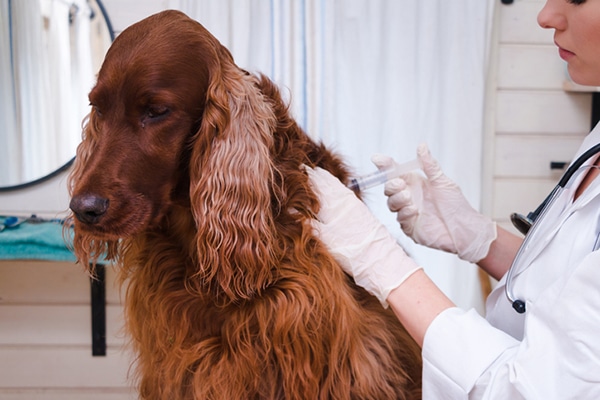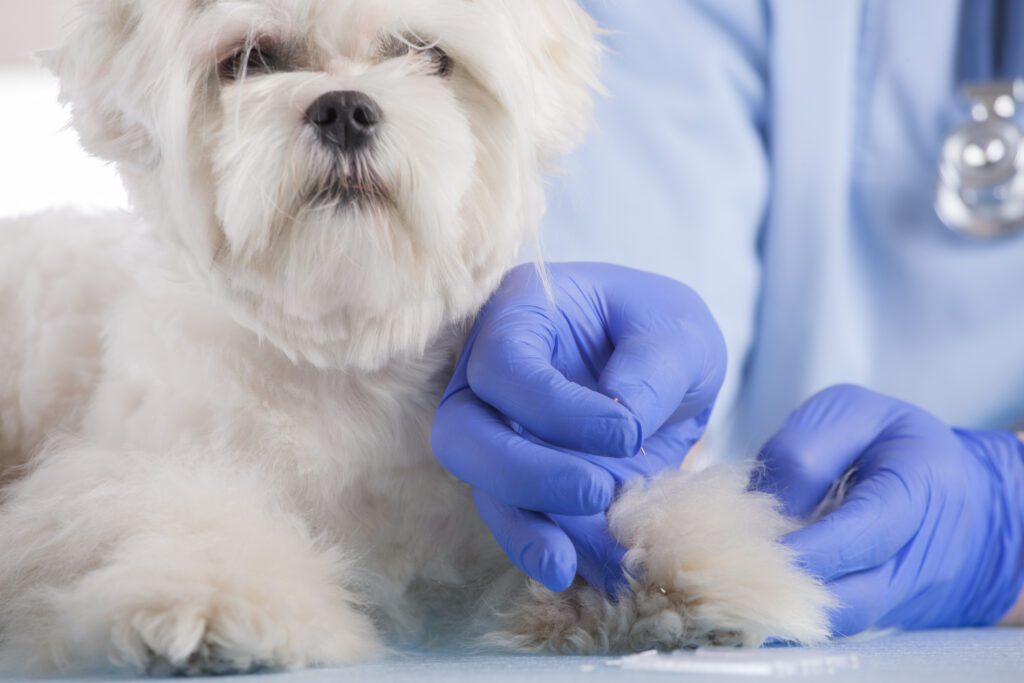Dog Rabies Symptoms in Clifton Park, NY: How to Spot Them and What to Do
First things first. Rabies is an emergency condition and is zoonotic, meaning it can be spread to humans. If you suspect your dog has been bit by a rabid animal or is showing any symptoms, call your veterinarian immediately. Now that we’ve established that, let’s discuss how to spot the symptoms of rabies in dogs in Clifton Park, NY and what you can do.

What is Dog Rabies and How Is It Transmitted in Clifton Park?
Rabies is a virus and is spread through infected saliva by bites. It is a virus with a high fatality rate, which is why it is so important to keep your dog up to date on their rabies vaccination. Rabies infects many mammals, from raccoons and foxes to humans and dogs. Not every country in the world has the rabies virus (called rabies-free countries like Australia and New Zealand).
Rabies is spread by infected bites, but the virus itself does not live long outside of a host (so you will not get rabies by walking a path in the woods an infected skunk walked previously). Rabies is a neurological disease, which means it attacks the brain and spinal cord.
In the United States and Canada, rabies is usually seen most in raccoons, skunks, bats, and foxes. In Europe, rabies is seen in red foxes. Sometimes street dogs will also carry rabies. Rabies is mostly found in bats in South America. Rabies does occur in dogs and cats, but approximately 93% of rabies cases in the United States in 2018 were found in wild animals.
I Think My Dog Was Bit by a Wild Animal, What Do I Do?
If your dog is up to date on vaccinations or not, contact your vet immediately. Rabies spreads quickly. Even without vaccination history, rabies anti-serum can be given and give your dog the best chance of not acquiring rabies and surviving.
Remember, rabies is not found in every wild animal. If your dog killed or injured the animal, you may also need to call your local animal control as the animal will need to be quarantined or tested for rabies. Do not touch the wild animal yourself, always call for professional help.
Animal control has cages and poles to use to ensure no one else gets bitten. If your dog will let you, try to gently irrigate the wound with warm water. If you safely can, wrap the wound on your dog in a towel or old t-shirt and head to the vet. They may need to sedate your dog to see how deep the wound is and can decide how best to treat it.
They can also advise you on how to watch for rabies signs. Usually, if your dog was bitten by a wild animal, they will receive an extra vaccination and be quarantined for 10 days. This can be at the vet clinic, at animal control, or at your house depending on state and local laws. You will be required to present the dog to the veterinarian after 10 days to be checked for symptoms if doing an at-home quarantine.
When Will I Know If My Dog Has Rabies from Being Bitten?
The usual quarantine period for animals without rabies vaccinations that bite a person is 10 days. In this time, rabies symptoms will begin to show up (though sometimes it can actually be much longer). This is the same for animals that were bitten by other animals and is called the incubation period.
For rabies, symptoms usually appear in 10 days, but sometimes it can even be longer. The incubation period depends on a few things: how bad the bite was, how deep the bite went, how close to the brain or spinal cord the bite was, and how much virus was in the infected saliva when the bite happened. The state of health of the dog that was bitten can also play a part.
What Are the Stages of Rabies and the Signs that Accompany Each?
Like most diseases, rabies goes through known stages as the infection progresses.
The Prodromal Stage
The first stage starts at the time of the bite and is called the prodromal phase. The dog will show signs of personality changes and can become subdued and depressed or excitable as the virus spreads to the muscles in the body. The prodromal stage is usually 2-3 days.
The Clinical Stage
The next stage is the clinical stage and can take one of two forms: dumb rabies or furious rabies. Dumb rabies is marked by a progression of stiff muscles and paralysis. There is trouble swallowing and eventually the dog will slip into a coma and, unfortunately, die. Dumb rabies is the most common form for rabies seen in dogs.
Furious rabies is less likely to occur in dogs and the signs are aggression, hyperactivity, an attempting to eat or drink anything in sight. Eventually paralysis starts and the animal is unable to eat or drink. Furious rabies also leads to violent seizures and death.
If your dog has rabies in Clifton Park, NY, take all precautions to not be bitten. You can get rabies from a rabid dog. If you are bitten, irrigate your wound with water immediately and head to the emergency room or other medical provider where you can be seen quickly. For rabies cases, the animal will usually be hospitalized for mild cases or humanely euthanized. All rabies cases need to be legally reported to the local authorities by your veterinarian.
Do Rabid Dogs Fear Water?
Hydrophobia, a fancy name for the fear of water, is a sign of rabies. Just not one found in dogs. Fear of water is actually a sign of rabies in humans.
Can Dogs Survive Rabies?
It is possible a dog can survive rabies, but it does not often happen, sadly. The best way to prevent your dog from getting rabies is to ensure they are up to date on their rabies vaccine. This can be either a one, two, or three-year vaccine depending on your dog’s age and state or local laws.
If you suspect your dog received a bite from a wild animal, call your vet immediately. They can start treatment and preventative options to give your dog the best chance of survival if the wild animal was carrying rabies.
Recent Posts
Acupuncture for Pet Pain Relief
Acupuncture for Pet Pain Relief If you’ve been searching for an alternative yet effective approach to manage…
Antifreeze and Pets: Keep Your Pet Safe This Winter
Antifreeze and Pets: Keep Your Pet Safe This Winter The Hidden Danger of Antifreeze As winter approaches,…
How Cold is Too Cold for Dogs?
How Cold is Too Cold for Dogs? If you’re like most of us, as soon as the…
About Us
Originally opened as Animal Care Hospital by Dr. Mark Johnston in 1989, the hospital became Cornerstone Veterinary Hospital in 2015 when it was purchased by Drs. Alan and Lisa Knott. The name 'Cornerstone' holds a special place in their hearts, representing not only their Christian faith but also their commitment to being the cornerstone of the community in which they practice. As a family-owned and operated practice, every pet is treated as part of the family, ensuring they receive the highest standard of care. The team at Cornerstone Veterinary Hospital is dedicated to building lasting relationships with clients and their beloved pets, striving to be the cornerstone of the community in which they practice.



